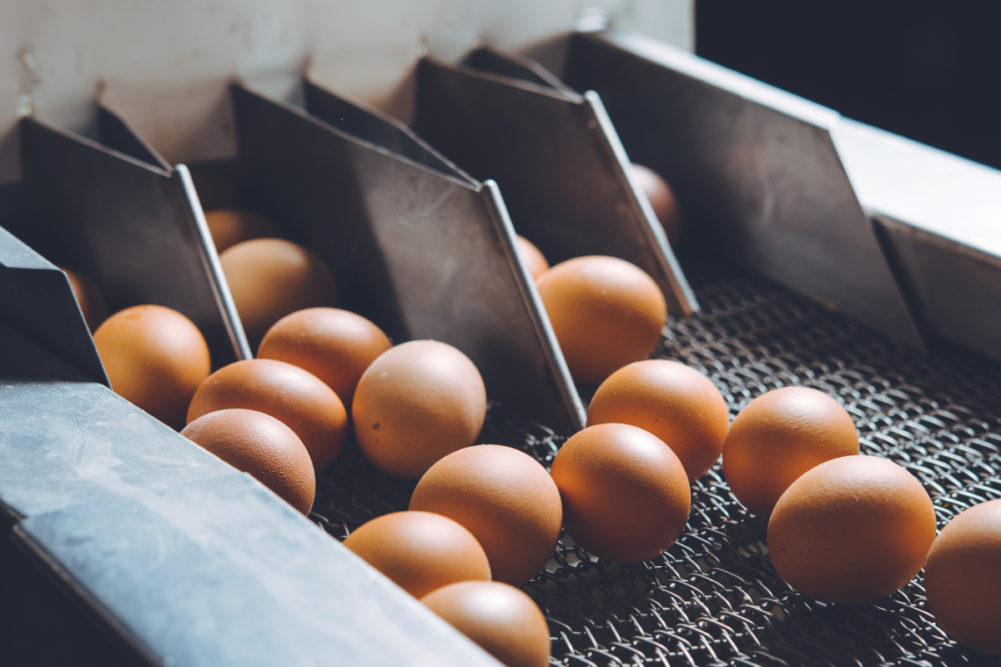WASHINGTON — A noticeable change in attitude, pricing and demand was indicated by ingredient processors in early May, signaling a shift from panic buying while sheltering at home by consumers to one of anticipation of reopening away-from-home venues. Some price changes were dramatic, just as when the process began in late March, while others were more subtle, and not all occurred simultaneously, but there was a shift, especially evident in dairy, eggs and meat. But no one is spouting the idea that all will be back to normal any time soon.
Prices for some products rose sharply then tumbled and have begun to come back up, while others initially plummeted and have begun to show life. An example of the latter is the dairy market, especially butter and cheese demand and prices. CME Group butter and cheese prices had been fluctuating since the first of the year until mid-March, when the plunge began. Butter values dropped 38% from the week ended March 13 to April 24, and cheddar cheese prices fell 33% (barrels) and 45% (blocks) between March 13 and April 17. By May 15, butter prices had risen 44% from their low, cheddar barrels were up 72% and blocks had surged 76%. Changes in dry dairy products were far less pronounced because they depend much less on the foodservice sector than do butter and cheese.
The resurgence in butter and cheese values was attributed to reduced milk supplies (farmers had been forced to dump millions of gallons of milk early in the shelter-at-home period) and to an uptick in foodservice demand as restaurants prepared to reopen from around May 15 forward.
Volatility in eggs was perhaps most pronounced. Grade A large retail eggs tripled in price to record highs over $3 a dozen (on the wholesale level) in the four weeks ended April 3, only to plunge 66% the following four weeks before leveling out. Panic buying drove prices up, then ample supplies from a market that had too many eggs before the pandemic along with limits on retail purchases drove prices down. Liquid whole egg prices rose modestly during the retail run-up, but then plunged to record lows in the first half of April as retail demand idled, excess eggs were shifted to breakers and foodservice demand all but disappeared in some cases. As calm settled into the retail environment, flock culling reduced the supply of eggs and a few foodservice orders began to come in, liquid whole egg then surged 180% in the first two weeks of May.
The meat situation developed slightly later and still is evolving but was no less dramatic. At one point in April about 40% of US beef and pork processing capacity was offline. The US Department of Agriculture’s beef cutout value — a measure of wholesale prices — more than doubled to a record $475.39 per cwt from April 10 to May 12. The pork cutout value jumped 130% to a high of $120.95 per cwt from April 10 to May 11. Wholesale meat prices have since retreated modestly as processing plants reopen intermittently and restrictions on consumer meat purchases were put in place at retail. Still, wholesale red meat prices are up sharply from a year ago.
The USDA estimated that US April beef production dropped 21% from April 2019, pork outturn was down 11%, broiler processing was down 2% and turkey production was down 8%. That followed record high beef and pork outturn in March.
Memorial Day typically is considered the kickoff to the summer grilling season — a boon to demand for hamburger, steak, chicken, cheese, salad dressing and the like. This year, midweek Kansas City supermarket flyers carried a single advertisement for hamburger patties and a couple for pork spareribs but none for regular ground beef, steak or chicken ahead of Memorial Day.
So what lies ahead? The easy answer is: no one knows as this is new to everyone. It certainly is complicated, with the loss of demand by sector (foodservice versus retail) and with negative price impact at the producer level but higher retail prices.
Many of the changes are seen as temporary, for an undetermined period. For example, the table egg laying flock was down 3.5% year-over-year in March, but the USDA said the reduction has stopped and egg production already is back on the rise.
The USDA in its May 12 supply-and-demand report lowered from April its forecast for 2020 red meat production by 6% and broilers by 4.4%. Prices paid to farmers for cattle, hogs and broilers already were down from 2019, but cattle and broiler price forecasts were lowered further. At the same time, the USDA forecast record high red meat production and higher meat prices in 2021, an indication that at least the government expects some return to normalcy. But much of the food industry seems a bit more cautious, and consumer reaction remains to be seen.





